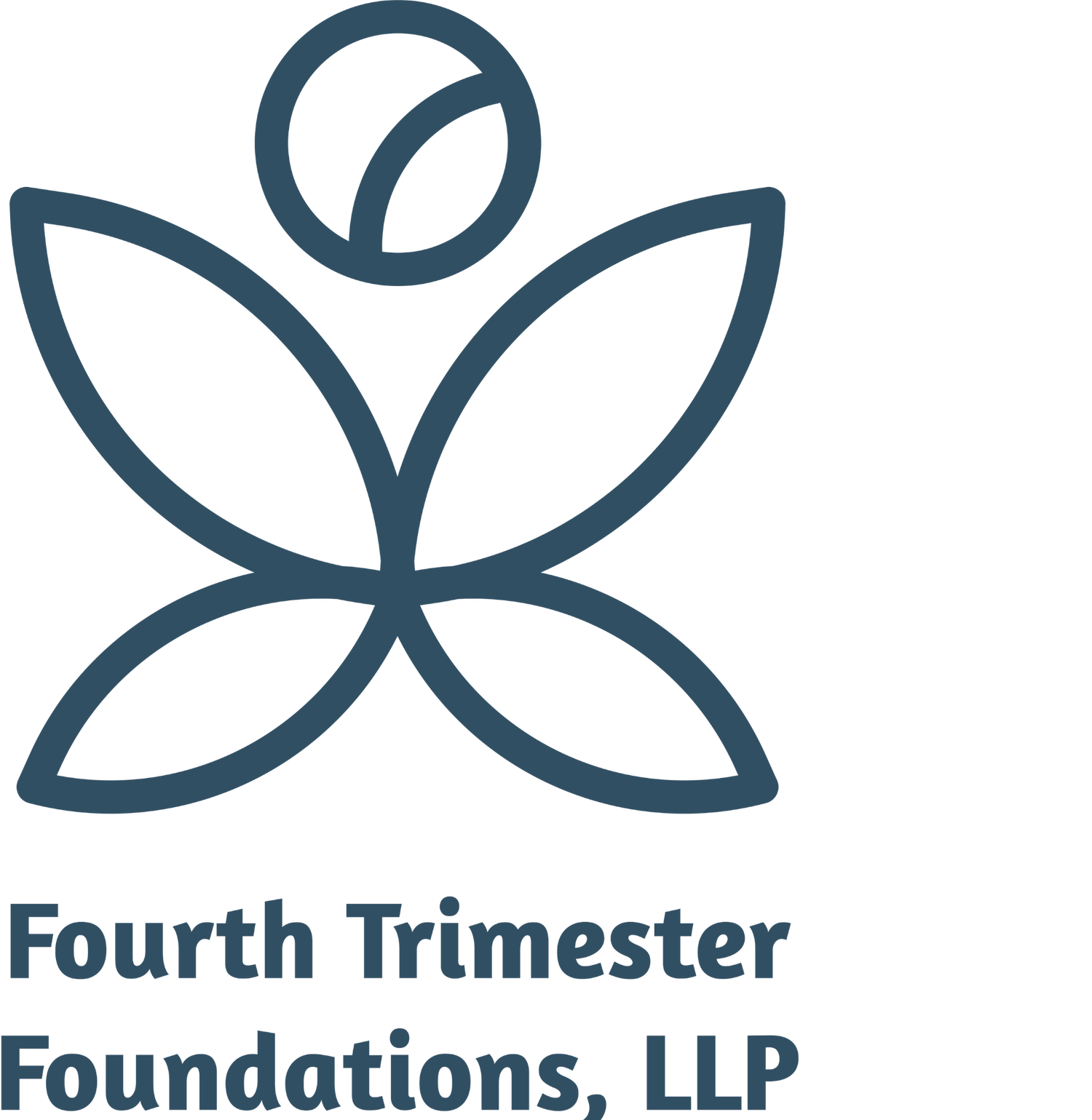The Ultimate Third Trimester To-Do List
to prepare you for labor, birth, and most importantly, the fourth trimester
*This blog post contains affiliate links. The small amount of commission we make on these links goes right back into the Fourth Tri mission to ensure every mother has access to a safe and empowered fourth trimester. Thank you for supporting our scholarship program!
When 28 weeks rolls around, it can simultaneously feel like pregnancy is dragging on forever and baby day is right around the corner. Your prenatal appointments start to become more frequent, there’s third trimester testing likely done ahead of birth, you’re discussing signs of labor with your provider, and you’re starting to feel the butterflies of an impending birth. It’s exciting! There can be a lot of nervous energy floating around and a lot of urge to nest, so here’s our comprehensive list of to-do’s for your third trimester that will keep you busy and also serve an important purpose. We’ve written them down from both the practicality of our nurse training as well as the hearts of mamas who have been on the other side, just like you. If you’re new here, read more about us in our website bio, or read your way through our past birth stories!
To-Do:
Schedule & attend preparation classes if you haven’t already. Our biggest suggestion is that you vary your education. Learn about labor and delivery, absolutely, but don’t forget newborn basics, feeding your baby, and postpartum preparation as well. So, where do you start? You might find that your chosen place of birth (i.e. hospital or birth center) offers childbirth education at an affordable cost. It may not be the most unbiased, but it is an option to consider depending on your birth choices. Many doulas, nurses (like us!), lactation consultants, and the like also offer their own private courses that you may find more detailed or tailored to your preferences. Ask mom friends, the professionals you’ve hired, your provider, the local mom Facebook group, or shoot us an email if you’re having trouble finding one.
2. Tweak and/or finalize your registry ahead of your baby shower. This is an exciting milestone in your pregnancy! It’s exciting to feel the love of your friends and family, receive the supplies you’ve been waiting for, and spend time together before a newborn turns things upside down. We recommend you hear out your friends and family on what they used or didn’t love from their own motherhood experiences, but ultimately choose what you’d like for your own family. Taking our Bare Minimum Baby course will help you learn the basics of safe newborn care while also helping you slim down the registry to baby must-haves so you can save room for things YOU might need. Don’t forget things like a comfy robe, a postpartum doula, cleaning services, a prenatal or postpartum massage, etc. When your baby is born, so are you. This registry is for the pair of you.
3. Finalize the details of maternity leave with your employer, if applicable. This one can be tricky to navigate, so start early and ask questions. Consult other colleagues who have used maternity leave benefits ahead of you. Contact your Human Resources department and ask A LOT of questions. Be in close contact with management. Know your rights.
4. Stock the freezer.
And don’t just focus on dinner. You’re going to be healing, hungry and searching for something easy to grab at all hours of the day. Stash breakfast and lunch foods, too! Some of our favorite recipes are in the blog archives, like this kale and white bean skillet, or power protein bites. Prepping freezer meals can be a fun nesting activity if you enjoy cooking, but don’t think this falls on you alone. You know that really nosy great aunt that texts you every other day wondering if the baby is here yet? Her texts may not be helpful, but if she makes a mean lasagna, help yourself and make her feel useful by asking her to make you a tray or two. If family isn’t close by, sign up for services like Lasagna Love to close the gap. Another great idea (because you can only eat lasagna so many times), is to prep crock pot meals in large freezer bags. Add all the ingredients in advanced and write instructions on the bag so when it’s time to cook, you can dump it, set it, and forget it.
5. Pack your bags. We highly recommend you pack a hospital bag for baby time regardless of where you plan to give birth. While we hope everything goes exactly to plan for you, we know professionally that sometimes things happen. We hate caring for postpartum mamas who arrived at the hospital unexpectedly and are sorely missing their favorite sweatpants or that extra large phone charge to make sure the memories get captured. That’s not to say you NEED anything besides your body to have a baby, and we’ve definitely got all the necessary supplies like pads and diapers at the hospital for you, but we know you have preferences and comfort items you’d like to have with you. It’s a good idea to get this bag packed by around 37 weeks pregnant and keep in in an easy spot for grab and go. Include a post-it list of things to be added to the bag at the last minute when it’s time to go, like photo IDs. If you’re a Fourth Tri alum, you know we have a specific method we recommend for packing bags that we discuss at length in the Taking Back Your Fourth Trimester Workshop. Don’t miss it if you haven’t joined us yet!
6. Fill out forms in advanced. This one doesn’t require too much explanation. If you’re planning for a hospital birth, you can likely fill out registration paperwork ahead of time so you don’t have to worry about filling out a clipboard of information in between contractions when you arrive. Ask your provider at your next prenatal visit how to go about that. You can also likely qualify for (and order) your breast pump through insurance before baby’s arrival. Ask your provider’s office about that, too, or visit Aeroflow Breast Pumps for an easy step by step process. If your baby is due towards the end of the year, there are also many postpartum and breast care products that FSA/HSA funds can be allocated towards.
7. Wash, fold, and put away new clothes. This includes yours and babe’s! It can feel exciting to wash and sort all the teeny tiny baby clothes you can’t wait to use and we love this milestone of pregnancy. One of our favorite tips, especially if you have older children and plan to room share in the beginning, is to grab a small set of bins or drawers (Meg has this one from Amazon) to keep in your bedroom. Stock it with all the things you might need quickly in the middle of the night so you don’t need to travel to the nursery weary eyed in the dark. Swaddles, pajamas, crib sheets, feeding pillow covers, burp cloths, etc. are all great. You can place a diaper caddy right on top with all of those supplies and you’re all set! While you’re washing clothes, also make sure to set aside some comfy, cool, and loose fitting clothes for yourself. Postpartum body temperature regulation can be a challenge in the fourth trimester (we dive into it in our workshop), not to mention the fluids coming from just about everywhere (you and babe both!). It’s a good idea to be prepped for frequent outfit changes.
8. Go shopping for healing supplies. Yup, now is the time to head to the drug store (and maybe also the internet) armed with a list of things to stock up on for perineal, nipple, and potentially incisional care postpartum. If you’ve taken our workshop, you have our list ready to go in your PDF files and a plan for where and how to stock it all! One of our favorite brands for lots of postpartum and baby focused products (like the mother of all nipple cream and an awesome sitz spray for your perineum) is Motherlove Herbal Company. You can use code FOURTHTRI15 for 15% off your order if you’d like!
9. Write out your birth plan/preferences. Share these plans with your provider, your labor support, and your partner. This might look like a formal birth plan, or it be a less concrete, more fluid discussion between you and those you trust. We believe the act of researching and discussing your preferences is often times more important than the actual piece of paper itself. Looking for a resource to get started? Evidence Based Birth is a wealth of information for labor, newborn, and postpartum interventions you may need some clarification on.
10. Rally the troops!
Before baby is here is a great time to start considering who you’d like to be in your inner circle during your fourth trimester (and also who you’d like to keep at arms length). If you’ve had a difficult pregnancy, you might already know who you can lean on when push comes to shove. Those same people are likely your troops when you’re postpartum. If you’re thinking about it for the first time, consider who you’re willing to breastfeed in front of, who is willing and able to help you with household tasks or baby care, and who makes you feel safe and loved. Download our FREE postpartum planner and add those people to your list. Fill out the rest with us during our workshop or on your own time when you’re ready.
If you have questions about any of the items on our ultimate checklist, feel free to shoot us an email, DM on instagram, or book a private 1:1 call to discuss with one of us! We’re always here and excited to help you make your postpartum experience the safest and most empowered 12 weeks (and beyond) that it can be. We also LOVE to see your birth announcements so send us a message and tell us all about it!






